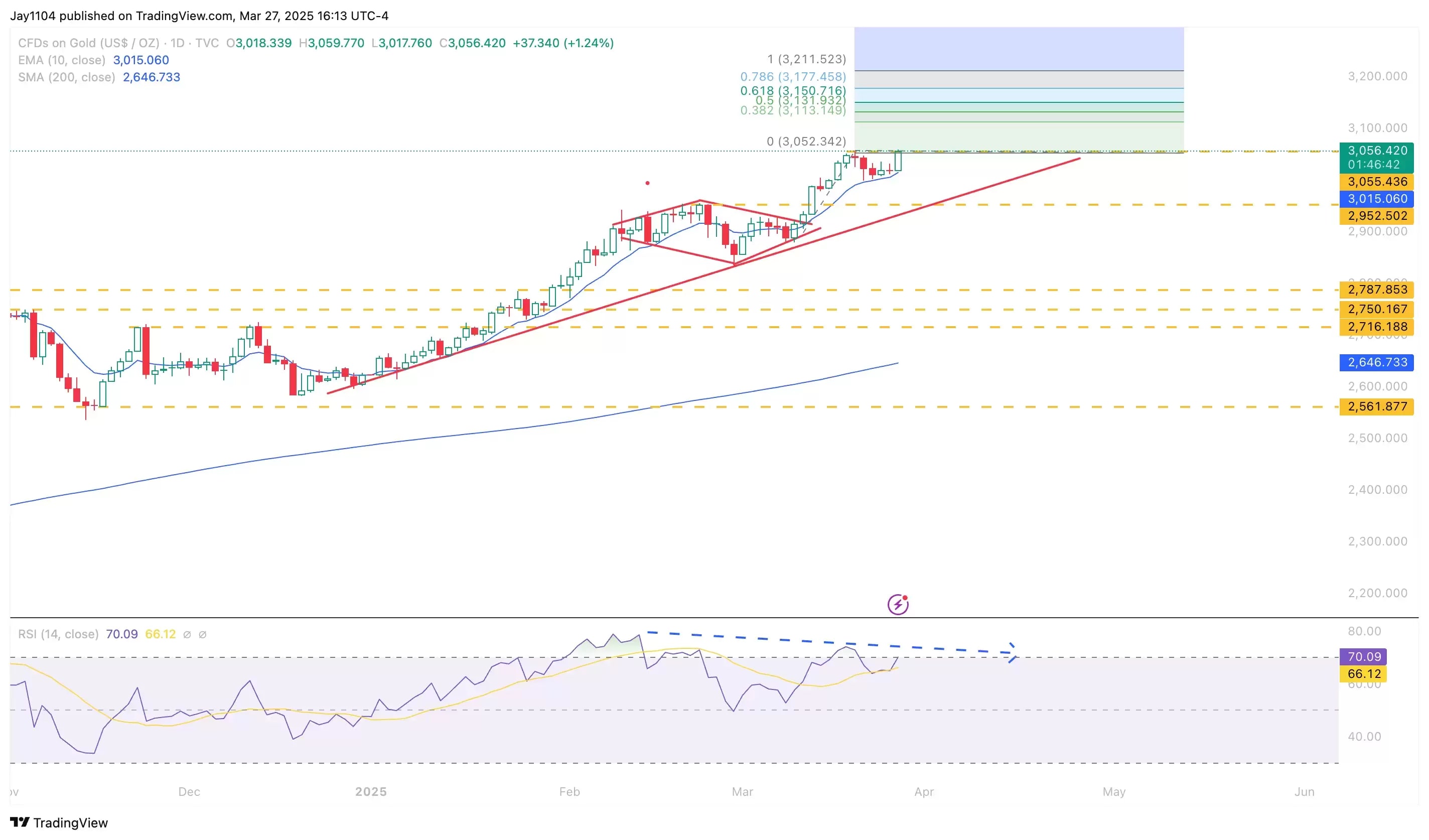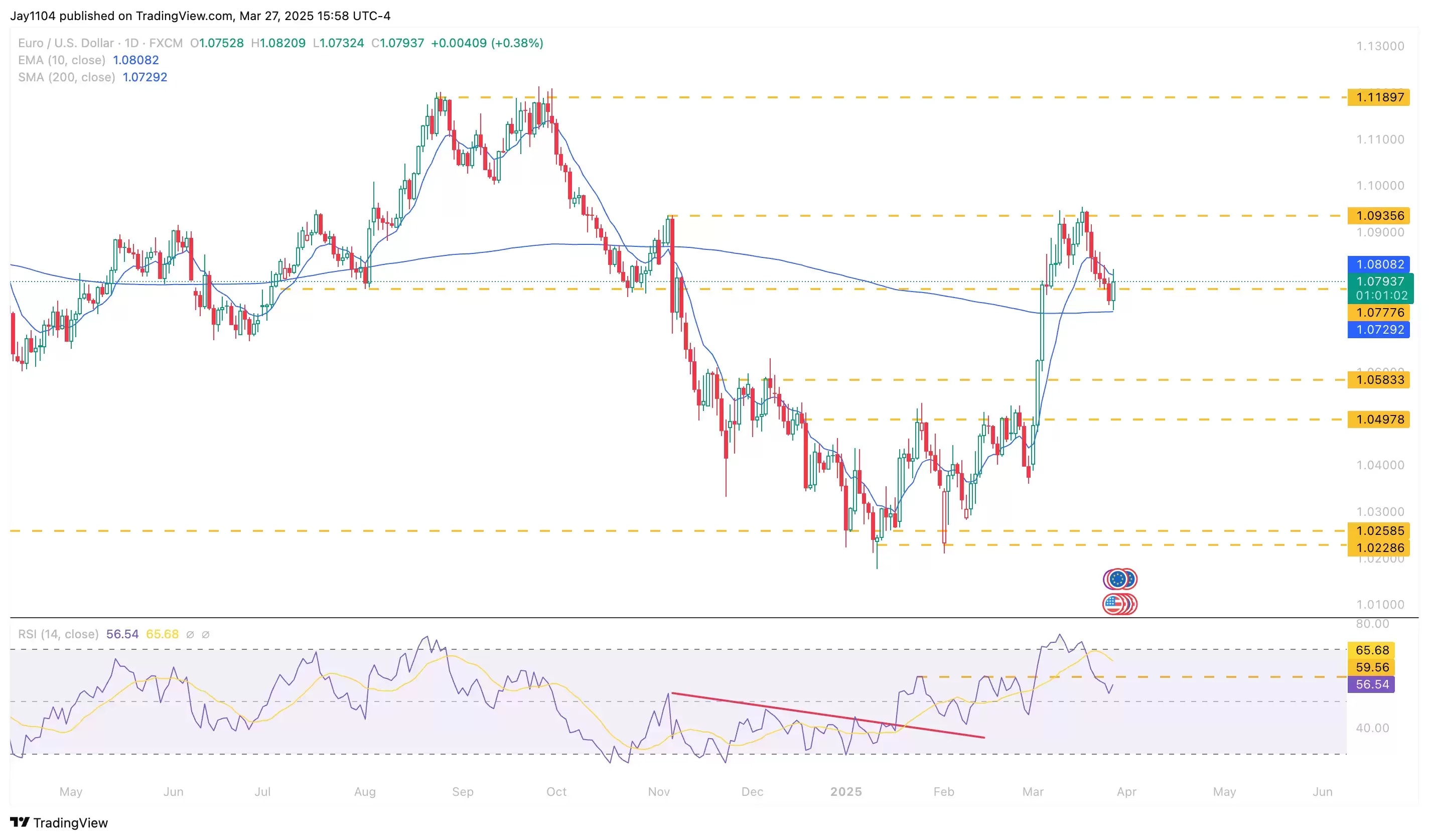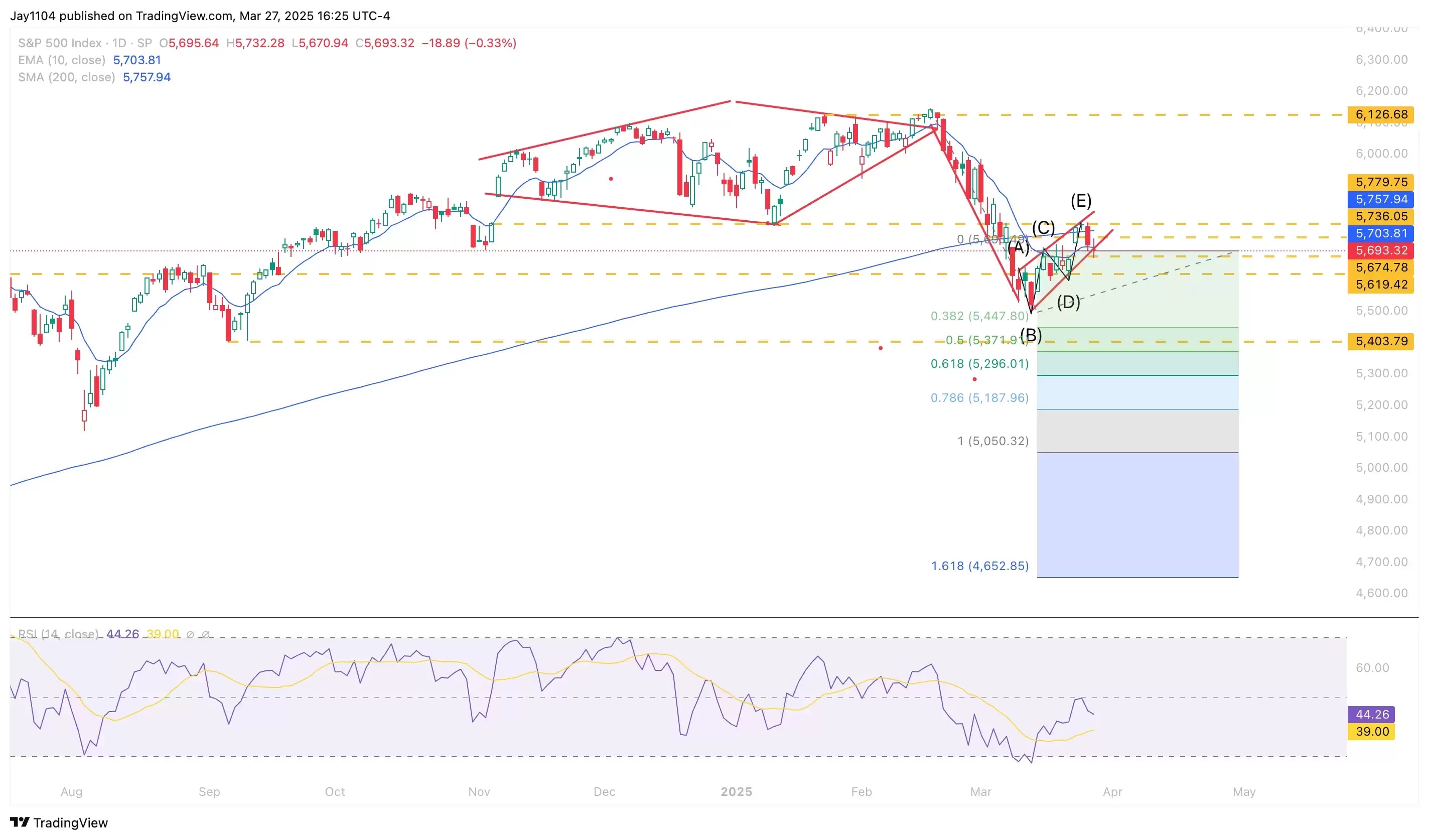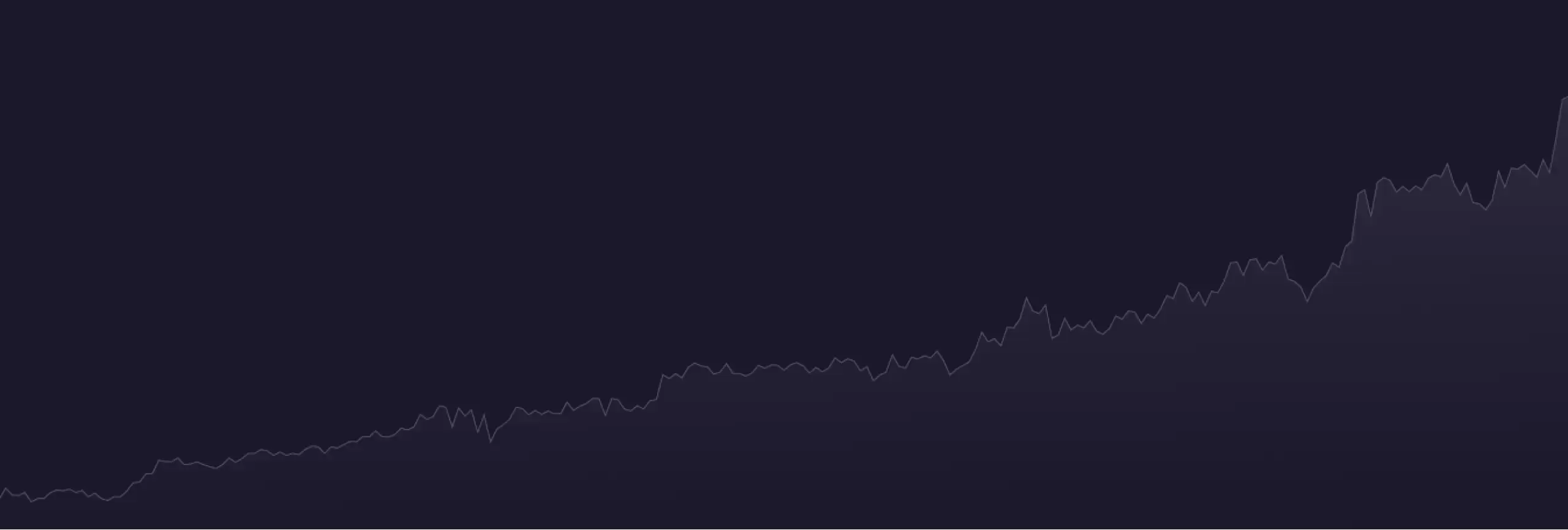
Welcome to Michael Kramer’s pick of the top three market events to look out for in the week beginning Monday 31 March.
After a volatile month for markets, many investors will be glad to see March end and April begin. That transition, however, will come with a heavy dose of economic data. Highlights include G7 economic comparisons with the latest purchasing managers’ index (PMI) figures, and US jobs data in the form of the job openings and labour turnover survey (JOLTS) on Tuesday and the non-farm payrolls print on Friday.
The data may add to the fog of uncertainty hanging over global markets. One thing that seems clear is that the anticipation of US president Donald Trump’s tariffs is driving up prices, as revealed by recent regional Federal Reserve surveys. Price pressures could be reflected in the coming week’s data before they make their way into consumer and producer price index readings later in April.
Global March PMI data
Tuesday 1 April (manufacturing PMI), Thursday 3 April (services PMI)
Comparisons of the economies of leading industrialised nations will be released this week, with March PMI figures from the US, the UK, and Europe. Analysts expect the US manufacturing PMI from the Institute for Supply Management (ISM), out on Tuesday, to remain unchanged at 50.3. A reading above 50 indicates expansion in the sector, while a reading below 50 indicates contraction.
The key component to watch will be the ISM manufacturing ‘prices paid’ index, which represents business sentiment regarding future inflation. Last month it rose to 62.4 – its highest level since summer 2022. A higher-than-expected reading for March – which seems possible, based on regional Fed surveys – could be a concern as it would signal a possible jump in inflation. That might shift investors’ focus back to the price pressures that have been building in the US economy over the last few months.
Hot inflation data might also prolong the rally in gold prices, which broke above $3,080 per troy ounce on Friday. A 100% extension of the recent upward move and consolidation period suggests that gold could rise to around $3,210 in the near term.
Gold CFDs, November 2024 - present

US February JOLTS
Tuesday 1 April
Hiring data in the US suggests that the number of job openings has stabilised in recent months. This should be reflected in a steady February JOLTS print on Tuesday. In January, job openings increased by 232,000 to 7.74m, according to the US Bureau of Labor Statistics.
If the February data shows a weakening in the labour market, it would be a real surprise and could indicate that the US is entering a period of slower growth. In that scenario, the dollar may continue to weaken against the euro.
The euro recently fell to the 200-day moving average near $1.0729 and bounced right off it to trade at $1.0774, as of Friday morning. If EUR/USD stays above the 200-day moving average, it might move higher in the near term, potentially surpassing $1.09.
EUR/USD, May 2024 - present

US March jobs report
Friday 4 April
The upcoming jobs report is expected to show a cooling in the pace of hiring. Economists estimate that the US economy added 128,000 jobs in March, down from 151,000 in February. Meanwhile, the unemployment rate is projected to rise to 4.2%, up from 4.1%, with growth in average earnings unchanged at 0.3% month-on-month. A tamer jobs market could weigh on US equities.
The S&P 500 appears to have formed a bear flag, as shown on the chart below. This technical analysis pattern suggests that the index, down 3% this year at roughly 5,700, may fall in the coming weeks. Weaker-than-expected jobs data could spook the market, potentially triggering a downward move. A break of the uptrend around 5,675 – which might be confirmed by a drop below the mid-March low around 5,500 – could lead to a significant decline. Starting from the mid-February high of around 6,140, a 100% extension of the pattern implies a potential fall back to 5,050, a drop of nearly 11%.
However, if the jobs data proves strong enough to suggest that the US government’s tariff policy is not harming the economy, and the S&P 500 can rise above 5,800, it could set the stage for a rally towards resistance near 6,000.
This fork-in-the-road moment makes Friday’s jobs report – and the economic data points leading up to it – a particularly important one for the US equity market.
S&P 500, August 2024 - present

Key economic and company events
The coming week’s major economic announcements and scheduled US and UK company reports include:
Monday 31 March
• China: March National Bureau of Statistics purchasing managers’ index (PMI) data
• Germany: February retail sales, March consumer price index (CPI)
• Japan: Q1 ‘tankan’ large manufacturing index
• Results: No major scheduled earnings announcements
Tuesday 1 April
• Australia: February retail sales, Reserve Bank of Australia interest rate decision
• China: March Caixin manufacturing PMI
• Eurozone: March harmonised CPI, March manufacturing PMI
• France, Germany, Italy, Spain, UK: March manufacturing PMI
• US: February job openings and labour turnover survey (JOLTS), March Institute of Supply Management manufacturing PMI
• Results: No major scheduled earnings announcements
Wednesday 2 April
• US: March ADP employment data
• Results: Raspberry Pi (FY)
Thursday 3 April
• Australia: February imports, exports and trade balance
• China: March Caixin services PMI
• Eurozone, France, Germany, Italy, Spain, UK: March services PMI
• Switzerland: March CPI
• US: March ISM services PMI, weekly initial jobless claims to 28 March
• Results: Acuity Brands (Q2), Conagra Brands (Q3), Lamb Weston (Q3)
Friday 4 April
• Canada: March unemployment rate
• Germany: February factory orders
• US: March jobs report, including non-farm payrolls, average hourly earnings and unemployment rate
• Results: No major scheduled earnings announcements
Note: While we check all dates carefully to ensure that they are correct at the time of writing, the above announcements are subject to change.
Disclaimer: CMC Markets is an execution-only service provider. The material (whether or not it states any opinions) is for general information purposes only, and does not take into account your personal circumstances or objectives. Nothing in this material is (or should be considered to be) financial, investment or other advice on which reliance should be placed. No opinion given in the material constitutes a recommendation by CMC Markets or the author that any particular investment, security, transaction or investment strategy is suitable for any specific person. The material has not been prepared in accordance with legal requirements designed to promote the independence of investment research. Although we are not specifically prevented from dealing before providing this material, we do not seek to take advantage of the material prior to its dissemination.






















